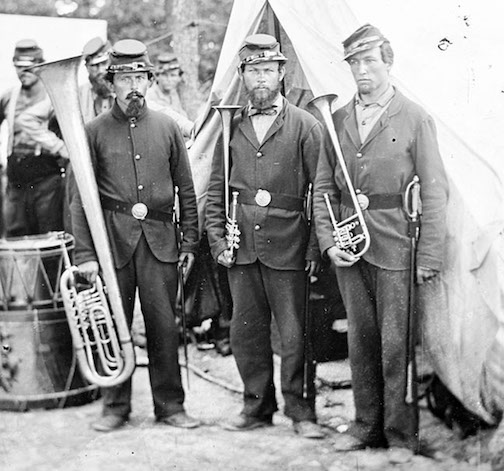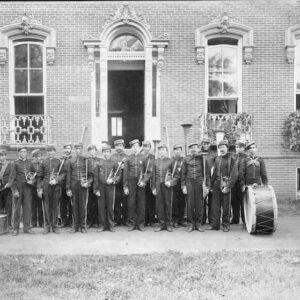Tag: horn
 Wikipedia says: An acoustic horn or waveguide is a tapered sound guide designed to provide an acoustic impedance match between a sound source and free air. This has the effect of maximizing the efficiency with which sound waves from the particular source are transferred to the air. Conversely, a horn can be used at the receiving end to optimize the transfer of sound from the air to a receiver.
Wikipedia says: An acoustic horn or waveguide is a tapered sound guide designed to provide an acoustic impedance match between a sound source and free air. This has the effect of maximizing the efficiency with which sound waves from the particular source are transferred to the air. Conversely, a horn can be used at the receiving end to optimize the transfer of sound from the air to a receiver.
Acoustic horns are used in brass and woodwind musical instruments.
Many wind instruments have some kind of flaring bell shape. These are generally not exponential in configuration, and are used to modify the standing wave patterns of the instrument, and thereby the musical notes which can be produced.
“The flared section of the bore in many instruments are almost conical. First let’s look at what this does to the spacing of the frequencies. In the page about pipes and harmonics, we saw that closed conical pipes have resonances whose frequencies are both higher and more closely spaced than those of a closed cylindrical pipe. So one can think of introducing a conical or flared section of the pipe as raising the frequencies of the standing waves, and raising the frequencies of the low pitched resonances most of all. The bell also contributes to this effect: in the rapidly flaring bell, the long waves (with the low pitches) are least able to follow the curve of the bell and so are effectively reflected earlier than are the shorter waves. (This is because their wavelengths are very much longer than the radius of curvature of the bell.) One might say therefore that the long waves ‘see’ an effectively shorter pipe.”
This has the effect of providing both the “brassy” sound of horn instruments versus woodwinds or even metal instruments which lack a flare, and also of increasing the perceived loudness of the instrument, as harmonics in the range to which the ear is most sensitive are now delivered more efficiently. However, this enhanced radiation in the higher frequencies means by definition less energy imparted to the standing waves, and thus less stable and well-defined notes in the higher registers, making the instrument more difficult to play.
Showing 1–16 of 84 resultsSorted by latest
-

Image ID: AYZB
$0.99 -

Image ID: AYUG
$0.99 -

Image ID: AYSR
$5.99 -

Image ID: AYNN
$0.99 -

Image ID: AXYG
$1.99 -

Image ID: AHCP
$3.99 -

Image ID: AGZL
$3.99 -

Image ID: ASJE
$5.99 -

Image ID: ARCH
$6.99 -

Image ID: ARCI
$6.99 -

Image ID: ARXE
$1.99 -

Image ID: APIU
$6.99 -

Image ID: APUY
$6.99 -

Image ID: APUZ
$3.99 – $8.99 This product has multiple variants. The options may be chosen on the product page -

Image ID: APVZ
$6.99 -

Image ID: APWF
$3.99 – $6.99 This product has multiple variants. The options may be chosen on the product page